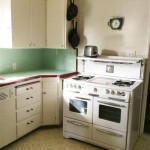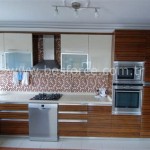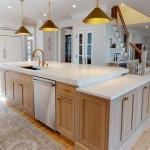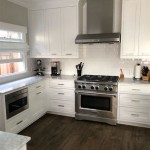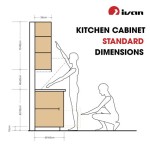Kitchen Cabinet Carcass Material: A Guide to Construction and Durability
Kitchen cabinets are a significant investment in any home. They are the heart of the kitchen, providing storage and organization for essentials while contributing to the overall aesthetic. The carcass, the structural framework of a cabinet, plays a crucial role in its longevity and performance. Choosing the right cabinet carcass material is essential to ensure both functionality and longevity.
Cabinet carcasses are typically constructed from various materials, each with its own advantages and disadvantages. Understanding these differences can help homeowners make informed decisions based on their specific needs and budget.
Common Cabinet Carcass Materials
Here are some of the most prevalent materials used for kitchen cabinet carcasses:
1. Plywood
Plywood is a popular choice for cabinet carcasses due to its strength, stability, and resistance to warping and moisture. This engineered wood product is made by layering thin sheets of wood veneer with alternating grain directions, creating a strong, durable panel. Plywood is available in various grades, with higher grades offering superior strength and water resistance.
2. Medium-Density Fiberboard (MDF)
MDF is another engineered wood product that offers a smooth, consistent surface. It is made by binding wood fibers with resin under high pressure and heat. MDF is relatively inexpensive and easy to work with, making it a cost-effective option for cabinet carcasses. However, it is less durable than plywood and can be susceptible to moisture damage.
3. Particleboard
Particleboard, also known as chipboard, is made from wood chips or sawdust bonded together with resin. It is the least expensive option among the three but also the least durable. Particleboard is susceptible to warping and moisture damage and may not be suitable for all kitchens, especially those with high humidity levels.
4. Solid Wood
Solid wood, such as maple, cherry, or oak, is a traditional and aesthetically pleasing choice for cabinet carcasses. It offers unparalleled durability and a natural beauty that enhances the kitchen's overall look. However, solid wood is more expensive than engineered wood products and requires skilled craftsmanship for proper construction.
Factors to Consider When Choosing Cabinet Carcass Material
Several factors should be considered when choosing the right cabinet carcass material for your kitchen:
1. Budget
Particleboard is the most budget-friendly option, followed by MDF. Plywood offers a good balance of price and durability, while solid wood is the most expensive. Consider your budget and prioritize the features that are most important to you.
2. Durability
Plywood and solid wood are the most durable options, offering resistance to moisture damage and longevity. If you are looking for cabinets that will last for decades, these materials are ideal. MDF offers good durability if it is properly sealed and maintained. Particleboard is the least durable option and may not be suitable for kitchens with heavy use or high humidity.
3. Moisture Resistance
Kitchen environments can be prone to moisture and humidity. Plywood and solid wood are naturally resistant to moisture damage, while MDF and particleboard require proper sealing to prevent warping and swelling. If your kitchen is prone to humidity, consider choosing a material with inherent moisture resistance.
4. Aesthetics
Solid wood offers a natural beauty that enhances the kitchen's aesthetic appeal. Plywood can also provide a natural wood look depending on the veneer used. MDF and particleboard offer a smooth, consistent surface but lack the natural warmth of wood. Choose the material that complements your kitchen's style and design.
5. Sustainability
Consider the environmental impact of the materials you choose. Engineered wood products can be made from recycled materials and are often more sustainable than solid wood. Sustainable forestry practices promote the responsible use of natural resources.
Conclusion
Choosing the right cabinet carcass material is an important decision that affects the durability, aesthetics, and longevity of your kitchen cabinets. By understanding the advantages and disadvantages of each option, you can make an informed choice that meets your needs and budget.

Kitchen Cabinets Design Materials Smith

7 Best Kitchen Cabinet Materials To Protect You From Poor Quality Horrors

7 Best Kitchen Cabinet Materials To Protect You From Poor Quality Horrors

Plywood Carcass Material Acrylic Modular Kitchen Cabinets

Kitchen Cabinet Carcass Guide Why A High Quality Is Essential Lasting

Which Alternative Materials Could I Use For My Kitchen Carcasses Houzz Ie

Diffe Material Of Carcasses By Masterclass Interiors

Selecting The Best Wood For Kitchen Cabinets Thomas

Kitchen Definitions The Classics

Kitchen Cabinet Carcass Guide Why A High Quality Is Essential Lasting
Related Posts


